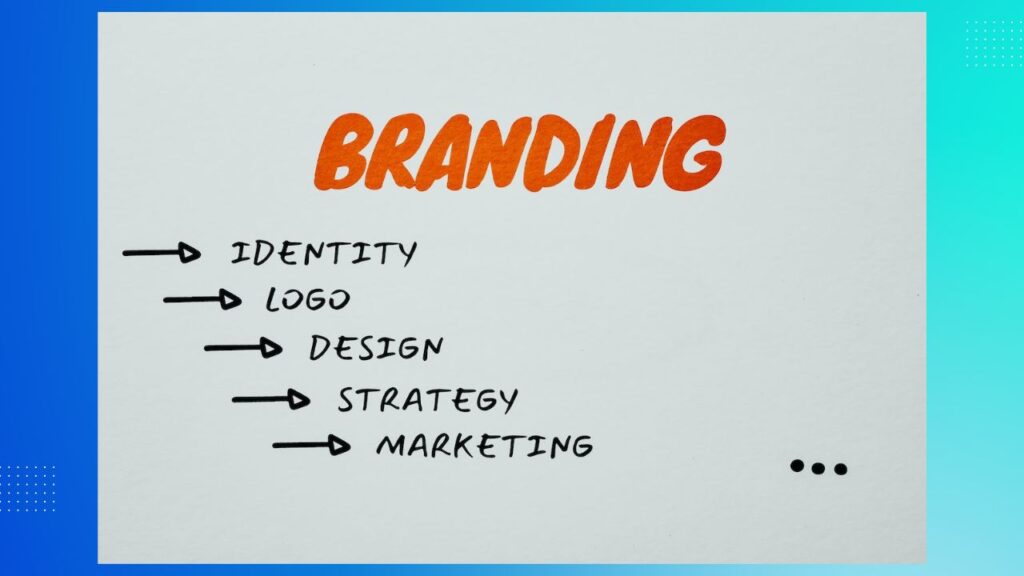Are you looking to start your own small business?
As a generation, millennials are known for being innovative, driven, and unafraid to take risks.
And with the rise of the gig economy and remote work, there’s never been a better time to start a small business as a millennial entrepreneur.
According to a report by the Small Business Administration, millennials are the most entrepreneurial generation, with over 27% of them starting or running their businesses.
However, starting a small business can be a daunting task, especially when it comes to navigating the financial aspects.
In this article, we’ll be sharing 10 essential steps for starting a small business as a millennial entrepreneur in the niche of personal finance.
We’ll provide you with actionable tips, insights, and strategies to help you turn your business idea into a successful venture.
So, whether you’re looking to launch a side hustle or turn your passion into a full-time business, keep reading to learn how to get started.
1. Step 1: Identify a Business Idea
1.1 The Importance of Passion and Market Research in Choosing a Business Idea
The first step in starting a small business as a millennial entrepreneur is to identify a business idea that aligns with your passion and interests.
Choosing a business idea that you’re passionate about will not only make your work more enjoyable but will also increase your motivation and drive to succeed.
However, passion alone is not enough to ensure the success of your business.
It’s essential to conduct market research to determine whether your business idea is viable and meets the needs of your target audience.
Market research involves gathering and analyzing data about your industry, competitors, and potential customers to make informed decisions about your business.
According to a report by Small Business Trends, 42% of small businesses fail because there’s no market need for their product or service.
This is why it’s crucial to combine passion and market research when choosing a business idea.

1.2 Tips for Brainstorming and Validating Business Ideas as a Millennial Entrepreneur
Here are some tips for brainstorming and validating business ideas as a millennial entrepreneur:
- Identify your skills and interests: Start by listing your skills, interests, and hobbies. Think about how you can leverage these to start a business that aligns with your passions.
- Identify a problem to solve: Look for problems in your community or industry and think about how you can solve them. Consider what’s missing in the market and how you can fill the gap.
- Conduct market research: Use market research tools like surveys, focus groups, and online research to gather information about your industry, competitors, and potential customers. Analyze the data to validate your business idea and make informed decisions about your business.
- Evaluate the competition: Identify your competitors and analyze their strengths and weaknesses. Consider how you can differentiate yourself from them and provide a unique value proposition to your customers.
- Test your idea: Create a minimum viable product (MVP) to test your business idea with your target audience. This could be a prototype or a simple landing page to gauge interest and collect feedback.
Table: Examples of Tools for Market Research
| Tool | Description |
| Surveys | Collect data through questionnaires or online surveys |
| Focus groups | Gather a small group of people to discuss a specific topic |
| Online | Use online tools like Google Trends and social media analytics |
| Research | to gather data about your industry, competitors, and customers |
1.3 Benefits of Combining Passion and Market Research
- Increases motivation and drive to succeed
- Helps you identify a business idea that meets the needs of your target audience
- Increases your chances of success by validating your business idea
- Helps you stand out from your competitors by providing a unique value proposition
In summary, identifying a business idea that aligns with your passion and meets the needs of your target audience is essential for starting a successful small business as a millennial entrepreneur.
Combining passion and market research will help you validate your business idea and increase your chances of success.
By following these tips and tools, you can brainstorm and validate your business idea with confidence.
2. Step 2: Conduct Market Research
2.1 The Significance of Market Research in Determining the Viability of a Business Idea
Market research is an essential step in starting a small business as a millennial entrepreneur.
It helps you determine the viability of your business idea and make informed decisions about your business.
Market research involves gathering and analyzing data about your industry, competitors, and potential customers.
According to a report by Small Business Trends, 14% of small businesses fail because of poor market research.
This highlights the importance of conducting market research before launching your business.
Market research helps you identify the following:
- Industry trends: Understanding industry trends can help you stay ahead of the competition and identify growth opportunities.
- Competitors: Analyzing your competitors’ strengths and weaknesses can help you differentiate yourself from them and provide a unique value proposition to your customers.
- Target audience: Knowing your target audience’s needs and preferences can help you tailor your products or services to meet their needs.
- Price points: Analyzing your competitors’ pricing strategies can help you determine the optimal price point for your products or services.

2.2 Tips for Conducting Market Research as a Millennial Entrepreneur
Here are some tips for conducting market research as a millennial entrepreneur:
- Use online tools: There are several online tools available that can help you gather data about your industry, competitors, and potential customers. Examples include Google Trends, social media analytics, and online surveys.
- Attend trade shows: Attending industry trade shows can help you stay up-to-date with the latest trends and innovations in your industry. It can also help you network with potential customers and partners.
- Conduct focus groups: Gather a small group of people to discuss a specific topic related to your business. This can help you gather qualitative data about your target audience’s preferences and opinions.
- Analyze customer reviews: Reading online customer reviews can provide insights into what your target audience likes and dislikes about your competitors’ products or services.
- Use a SWOT analysis: A SWOT analysis (strengths, weaknesses, opportunities, and threats) can help you identify your business’s strengths and weaknesses and opportunities and threats in the market.
Table: Examples of Online Tools for Market Research
| Tool | Description |
| Google Trends | Provides data on search volume and interest over time |
| Social media analytics | Provides insights into your target audience’s preferences and behaviors on social media platforms |
| Online surveys | Allows you to collect data from a large number of people |
2.3 Benefits of Conducting Market Research
- Helps you make informed decisions about your business
- Increases your chances of success by identifying opportunities and potential pitfalls
- Provides insights into your target audience’s needs and preferences
- Helps you stay ahead of the competition by understanding industry trends
In summary, conducting market research is a critical step in starting a small business as a millennial entrepreneur.
It helps you identify industry trends, analyze competitors, understand your target audience, and determine price points.
By following these tips and tools, you can conduct market research with confidence and make informed decisions about your business.
3. Step 3: Develop a Business Plan
3.1 The Importance of a Business Plan for Outlining the Vision and Goals of a Small Business
A business plan is a written document that outlines the vision and goals of a small business.
It is an essential tool for any entrepreneur as it provides a roadmap for the business’s success.
According to a study by Palo Alto Software, businesses with a written business plan are twice as likely to succeed compared to businesses without a plan.
A business plan helps you in the following ways:
- Clarifies your vision: Writing a business plan forces you to think deeply about your business’s purpose, goals, and values. It helps you clarify your vision and communicate it to others.
- Identifies potential problems: A business plan helps you identify potential problems that may arise and develop strategies to overcome them.
- Attracts investors: A well-written business plan can attract investors by demonstrating your business’s potential for success and outlining how you plan to achieve your goals.
- Measures progress: A business plan serves as a benchmark for measuring your progress toward your goals. It helps you stay focused and motivated.

3.2 Tips for Creating a Business Plan as a Millennial Entrepreneur
Here are some key elements for creating a business plan as a millennial entrepreneur:
| Element | Description |
| Executive summary | Provides an overview of your business, including your vision, mission, and goals |
| Business description | Describes your products or services, target audience, competitive advantage, and industry analysis |
| Marketing strategy | Describes how you plan to market your products or services, including your target audience, pricing strategy, and promotional tactics |
| Financial plan | Includes details about your startup costs, revenue projections, and cash flow statements |
| Risk analysis | Identifies potential risks that may impact your business |
In summary, a business plan is an essential tool for any millennial entrepreneur starting a small business.
It outlines your business’s vision, goals, and strategies for success.
By following these tips and including key elements in your business plan, you can increase your chances of success and attract investors.
4. Step 4: Determine funding sources
4.1 An Overview of funding options for small businesses
Once you have your business plan in place, you need to figure out how to finance your business.
There are several funding options available for small businesses, and as a millennial entrepreneur, you should be aware of each of them.
Here’s a brief overview of some of the most common funding options:
- Personal savings/Bootstrapping: Using your savings to fund your business is the most common way to finance a small business. It can be risky, but it also means that you don’t have to give up any ownership of your business.
- Friends and family: If you have friends or family members who are willing to invest in your business, this can be a good option. However, it’s important to be clear about the terms of the investment and to have a formal agreement in place.
- Business loans: You can get a business loan from a bank, credit union, or other financial institution. This option requires good credit and a strong business plan, and you’ll need to make regular payments on the loan.
- Small Business Administration (SBA) loans: The SBA provides loans to small businesses through partner lenders. These loans are designed to help businesses that might not qualify for traditional loans.
- Crowdfunding: Crowdfunding is a relatively new way to fund a small business. You can create a campaign on a crowdfunding website and ask people to contribute money to your business in exchange for rewards or equity.
- Angel Investors: Angel investors are wealthy individuals who invest their own money in startups in exchange for equity.
- Venture Capitalists: Venture capitalists are professional investors who manage large funds and invest in high-growth startups in exchange for equity.

4.2. Pros & Cons of Different Funding Options
| Funding Option | Pros | Cons |
| Bootstrapping | Complete control, no debt | Limited funds, slow growth |
| Friends and Family | Easier to obtain, flexible terms | Risk of damaging personal relationships |
| Crowdfunding | Access to a large pool of investors, low cost | Limited amount of funding, time-consuming |
| Loan | Flexibility, tax benefits, builds credit | Stringent qualification requirements, debt, risk of default, interest rates |
| Angel Investors | Experience and expertise, network connections | High cost, loss of control |
| Venture Capitalists | Large amounts of funding, expertise, and resources | Loss of control, high cost |
4.3 Tips for securing funding as a millennial entrepreneur
Securing funding for your small business can be a challenge, but there are steps you can take to improve your chances of success.
Here are some tips for securing funding as a millennial entrepreneur:
- Start early: It’s important to start looking for funding as early as possible. You may need to spend several months researching and preparing before you start pitching your business to potential investors.
- Know your business plan: You should be able to clearly explain your business plan to potential investors. Be prepared to answer questions about your revenue model, target market, and growth strategy.
- Build a network: Networking is key to securing funding. Attend industry events and meet other entrepreneurs and investors. Join online communities and engage with other entrepreneurs on social media.
- Prepare a pitch: You’ll need to create a pitch that explains your business and why it’s a good investment. This can be a written document or a presentation.
- Be persistent: Securing funding can be a long and difficult process. Don’t get discouraged if you face rejection or setbacks. Keep refining your pitch and reaching out to potential investors.
5. Step 5: Choose a business structure
When starting a small business, choosing the right business structure is crucial.
The structure you choose will impact your personal liability, taxes, and other legal matters.
As a millennial entrepreneur, it is essential to understand the different business structures available and determine which one best suits your needs.
5.1 An overview of different business structures and their benefits and drawbacks
There are four main business structures to consider when starting a small business: sole proprietorship, partnership, limited liability company (LLC), and corporation.
- Sole proprietorship: A sole proprietorship is the simplest and most common business structure. It is a business owned and operated by one person, and there is no legal distinction between the owner and the business. The owner has full control over the business and is personally liable for all its debts and obligations.
- Partnership: A partnership is a business owned by two or more people. Each partner contributes to the business and shares its profits and losses. There are two types of partnerships: general partnership and limited partnership. In a general partnership, all partners have equal control over the business and are personally liable for its debts and obligations. In a limited partnership, some general partners have control over the business and are personally liable for its debts and obligations, and limited partners invest in the business but have no control over it and are not personally liable for its debts and obligations.
- Limited liability company (LLC): An LLC is a hybrid business structure that combines the benefits of a corporation and a partnership. It provides personal liability protection for its owners (called members) while allowing them to avoid double taxation. Members of an LLC can choose to be taxed as a partnership or a corporation.
- Corporation: A corporation is a separate legal entity from its owners (called shareholders). It provides personal liability protection for its shareholders and allows them to raise capital through the sale of stock. Corporations are subject to double taxation, which means they are taxed on their profits, and shareholders are taxed on their dividends.
Tl;dr. Here’s a flash comparison table for your convenience.
| Business Structure | Definition | Benefits | Drawbacks |
| Sole Proprietorship | A business owned and operated by one person | Unlimited personal liability, difficulty raising capital | Unlimited personal liability, difficulty raising capital |
| Partnership | A business owned and operated by two or more people | More complex to start and maintain, with higher fees and legal costs | Unlimited personal liability, potential for conflicts between partners |
| Limited Liability Company (LLC) | A hybrid of a corporation and a partnership, with limited liability for owners | Limited liability for owners, flexible tax options | More complex to start and maintain, higher fees and legal costs |
| Corporation | A separate legal entity owned by shareholders | Limited liability for owners, easier to raise capital | More complex to start and maintain, subject to double taxation |

5.2 Tips for Choosing a business structure as a millennial entrepreneur
Choosing the right business structure requires careful consideration of your business goals, personal liability, taxes, and other legal matters.
Here are some tips to help you make the right decision:
- Consider your liability: If you want to protect your assets from business debts and obligations, consider forming an LLC or corporation.
- Think about taxes: If you want to avoid double taxation, consider forming an LLC or corporation and electing to be taxed as a partnership.
- Consider your business goals: If you plan to raise capital through the sale of stock or take your business public, consider forming a corporation.
- Think about management and control: If you want to have full control over your business, consider forming a sole proprietorship or LLC. If you want to share control with others, consider forming a partnership or corporation.
- Consult with a professional: It is always a good idea to consult with a lawyer or accountant to help you choose the right business structure and ensure that you comply with all legal requirements.
Choosing the right business structure is an important step in starting a small business.
Take the time to carefully consider your options and seek professional advice if needed.
6. Step 6: Register the business
Starting a small business can be an exciting and rewarding endeavor, but it’s important to make sure that you take the necessary steps to protect it legally.
One of the most important steps in this process is registering your business.
Registering your business not only protects your business name and brand but also helps to establish your business as a legal entity separate from yourself.
This means that your assets are protected in case of any legal issues that may arise.
6.1 Tips for Registering a Business as a millennial entrepreneur
As a millennial entrepreneur, registering your business can be a fairly straightforward process.
Here are some tips to get you started:
- Choose a business name: Before you can register your business, you’ll need to choose a name for it. Make sure to choose a name that’s unique and memorable, and that accurately reflects your business.
- Conduct a name search: Once you’ve chosen a name for your business, you’ll need to conduct a name search to make sure that it’s not already taken. You can do this by checking with your state’s Secretary of State office or by doing an online search.
- Register your business: Once you’ve chosen a name and conducted a name search, you can register your business with your state. This process will vary depending on where you live but typically involves filling out a registration form and paying a fee.
- Obtain any necessary permits or licenses: Depending on the type of business you’re starting, you may need to obtain certain permits or licenses. This could include a business license, a zoning permit, or a health permit.
- Obtain an Employer Identification Number (EIN): If you plan to hire employees, you’ll need to obtain an Employer Identification Number (EIN) from the IRS. This number is used to identify your business for tax purposes.
By following these steps, you can ensure that your business is legally protected and ready to start operating.

7. Step 7: Develop a brand and marketing
As a millennial entrepreneur, it’s crucial to understand the significance of developing a brand and marketing strategy to attract potential customers.
This step requires careful consideration and planning, as it will ultimately determine the success of your business.
7.1 The significance of developing a brand and marketing strategy for attracting customers
Developing a strong brand and marketing strategy is vital for several reasons:
- Attracting customers: A well-crafted brand and marketing strategy will attract customers and differentiate your business from competitors.
- Building credibility: A professional-looking brand and marketing strategy build credibility with potential customers, making them more likely to trust your business.
- Long-term growth: A strong brand and marketing strategy can lead to long-term growth and success.

7.2 Tips for Developing a Brand and marketing strategy as a millennial entrepreneur
Here are some tips for developing a brand and marketing strategy:
- Identify your target audience: Determine who your ideal customers are and tailor your brand and marketing strategy to appeal to them.
- Define your brand identity: Develop a unique brand identity that aligns with your business values and mission statement. This includes your brand name, logo, colors, and overall aesthetic.
- Create a website: A website is a must-have in today’s digital age. Ensure it is user-friendly, visually appealing, and includes all the essential information about your business.
- Leverage social media: Social media platforms provide an excellent opportunity to engage with potential customers and promote your business. Choose the platforms that best suit your business and target audience.
- Utilize content marketing: Develop high-quality, informative content to showcase your expertise and engage with potential customers. This can include blog posts, videos, infographics, and more.
- Consider paid advertising: Paid advertising on platforms like Google, Facebook, and Instagram can be an effective way to reach your target audience and increase brand awareness.
Here are some pros and cons of different strategies you can use:
| Branding Strategy | Pros | Cons |
| Use social media to build a following | Cost-effective, targeted advertising | Requires time and effort to maintain social media accounts |
| Partner with other businesses or influencers | Expands reach and builds credibility | Can be expensive or require giving up control over your brand |
| Attend events and conferences | Provides opportunities for networking and exposure | Requires travel and expenses |
| Utilize email marketing campaigns | Allows for personalized communication with customers | Can be seen as intrusive if not done correctly |
| Utilize content marketing (blogs, podcasts, videos) | Establishes credibility and thought leadership | Requires consistent and quality content creation |
By taking the time to develop a strong brand and marketing strategy, you’ll increase your chances of attracting and retaining customers, building a reputable business, and achieving long-term success.
8. Step 8: Set up operations and logistics
8.1 The importance of efficient operations and logistics for a successful small business
Efficient operations and logistics are essential for any small business to succeed.
This step involves setting up the day-to-day functions of your business, from production and delivery to inventory management and customer service.
By establishing efficient operations and logistics, you can ensure that your business runs smoothly and meets the needs of your customers.
Operations and logistics can impact your business’s profitability, customer satisfaction, and overall success.
Poor operations and logistics can lead to unhappy customers, lost sales, and decreased profits.
On the other hand, efficient operations and logistics can help you to save time and money, improve customer satisfaction, and increase sales.
Here are some key considerations for different areas of operations your business might require:
| Area of Operations and Logistics | Key Considerations |
| Physical Location | Choose a location that is easily accessible to customers, has adequate parking, and is zoned for your type of business. |
| Equipment and Supplies | Determine what type of equipment and supplies you will need to operate your business and purchase or lease them accordingly. |
| Inventory Management | Develop a system to track your inventory levels and ensure that you always have enough stock on hand to meet customer demand. |
| Shipping and Receiving | Determine how you will ship and receive products, and choose a reliable shipping provider that offers affordable rates. |
| Supply Chain Management | Establish relationships with reliable suppliers and vendors to ensure that you have access to the products and materials you need to operate your business. |
| Quality Control | Develop processes and procedures to ensure that your products and services consistently meet or exceed customer expectations. |

8.2 Tips for Setting up Operations and Logistics as a Millennial Entrepreneur
As a millennial entrepreneur, there are several tips you can follow to set up efficient operations and logistics for your small business:
- Automate processes: By automating routine tasks, you can save time and reduce the risk of errors. For example, you can use software to manage your inventory or automate your customer service inquiries.
- Outsource non-core functions: Consider outsourcing non-core functions of your business, such as accounting or IT support. Outsourcing can help you to focus on your core competencies while also reducing costs.
- Use technology: Use technology to streamline your operations and logistics. For example, you can use a mobile point-of-sale system to manage sales or use a cloud-based system for inventory management.
- Prioritize customer service: Make sure you have a customer service strategy in place to address customer inquiries and concerns. Good customer service can lead to loyal customers who return to your business and recommend it to others.
- Keep an eye on costs: Keep track of your expenses and look for ways to reduce costs. By cutting unnecessary expenses, you can increase your profitability and invest in the growth of your business.
By following these tips, you can set up efficient operations and logistics for your small business, helping you to achieve long-term success.
9. Step 9: Hire employees and build a team
As a millennial entrepreneur, building a team is one of the most significant steps in establishing a successful business.
The right team can help you achieve your business goals, expand your operations, and improve your bottom line.
However, hiring the wrong people can lead to poor performance, lost productivity, and even legal issues.
Therefore, it’s essential to understand the significance of hiring the right employees and building a strong team.
9.1 The Significance of Hiring the Right People
The success of your small business depends on the quality of your employees.
The right team can help you achieve your goals, expand your operations, and improve your bottom line.
Hiring the wrong people can lead to poor performance, lost productivity, and even legal issues.
Here are some of the reasons why hiring the right people is critical:
- Skillset: The right team brings diverse skillsets and expertise that complement each other. It ensures that your business has a range of talent and knowledge to solve problems and innovate.
- Culture fit: Your team should share your company’s values and vision. They should be passionate about your business and committed to its success.
- Customer service: Your employees are the face of your business, and they interact with your customers directly. Therefore, hiring people with excellent communication and interpersonal skills can significantly impact your customer service experience.
- Productivity: Your team’s productivity can significantly impact your business’s growth and profitability. Hiring the right people who are motivated, proactive, and have a strong work ethic can improve your operations and bottom line.

9.2 Tips for Hiring Employees and Building a Team
As a millennial entrepreneur, here are some tips for hiring employees and building a team:
- Define your hiring needs: Before you start recruiting, identify your company’s hiring needs, including the required skills, experience, and education.
- Look beyond the resume: Resumes can be deceiving. Look for qualities like initiative, creativity, and teamwork skills that aren’t necessarily on paper.
- Use social media: Social media can be a powerful tool for recruitment. Use platforms like LinkedIn to find potential candidates and check their professional networks.
- Conduct thorough interviews: The interview process is an opportunity to assess candidates’ suitability for the role and culture fit. Ask open-ended questions to gauge their critical thinking and problem-solving abilities.
- Offer competitive compensation and benefits: Offer a competitive salary and benefits package to attract top talent. Consider non-monetary perks like flexible work schedules and opportunities for career growth.
- Foster a positive work culture: A positive work culture can attract and retain talented employees. Create an inclusive environment that values diversity, encourages creativity and innovation, and fosters a sense of community.
Here is a handy checklist you can follow for hiring:
| Step | Description |
| 1 | Identify the roles you need to fill |
| 2 | Develop job descriptions and post job openings |
| 3 | Screen resumes and cover letters |
| 4 | Conduct initial phone or video interviews |
| 5 | Schedule in-person interviews |
| 6 | Check references and conduct background checks |
| 7 | Make a job offer and negotiate salary |
| 8 | Onboard new employees |
| 9 | Set performance goals and expectations |
| 10 | Provide ongoing training and development |
| 11 | Foster a positive and inclusive workplace culture |
10. Step 10: Launch the business and manage growth
10.1 The significance of a successful launch and ongoing growth management for a small business
Launching a business is an exciting milestone for any entrepreneur.
However, the success of the launch does not guarantee long-term success.
To ensure long-term growth and success, it is essential to have a solid plan in place for managing growth.
This means monitoring key performance indicators (KPIs) and constantly adapting to market changes and customer needs.
Managing growth is a continuous process, and it requires a long-term mindset and a willingness to learn from both successes and failures.

10.2 Tips for Launching a Business and managing growth as a millennial entrepreneur
Here are some tips for launching a business and managing growth as a millennial entrepreneur:
- Have a launch plan: A well-executed launch plan can help create buzz and momentum for your business. It should include details such as your target audience, marketing tactics, and sales projections.
- Use technology to your advantage: As a millennial entrepreneur, you are likely comfortable with technology. Use it to your advantage by automating tasks, streamlining processes, and leveraging data to make informed decisions.
- Monitor KPIs: Keep a close eye on your KPIs, such as revenue, customer acquisition costs, and customer retention rates. These metrics will help you identify what is working and what is not.
- Pivot when necessary: Be willing to pivot when necessary. If a particular product or service is not resonating with your target audience, be willing to adjust your strategy and try something new.
- Build a strong team: Surround yourself with a talented team that shares your vision and values. A strong team can help you navigate the challenges of growth and support you as your business scales.
- Stay connected to your customers: As your business grows, it can be easy to lose touch with your customers. However, staying connected to your customers is essential to understanding their evolving needs and staying ahead of the competition.
- Seek feedback and advice: Seek feedback and advice from mentors, industry experts, and other successful entrepreneurs. This can help you gain valuable insights and avoid common pitfalls.
- Plan for the long term: Managing growth requires a long-term mindset. Instead of focusing solely on short-term goals, develop a strategic plan that considers the next 3-5 years and beyond.
Bottom Line…
In conclusion, with the right mindset, knowledge, and preparation, you can turn your passion and ideas into a thriving business.
Remember, entrepreneurship is not an easy road, but it can be incredibly rewarding.
According to a study by the Global Entrepreneurship Monitor, millennials are more likely to start their businesses than any other generation.
And with the ever-evolving digital landscape, the opportunities for entrepreneurship are only growing.
By following the steps outlined in this article, you can increase your chances of success and minimize the risks associated with starting a business.
From identifying a business idea, conducting market research, developing a business plan, securing funding, choosing a business structure, registering your business, developing a brand and marketing strategy, setting up operations and logistics, hiring employees, and launching and managing growth, each step plays a critical role in the success of your business.
As a millennial entrepreneur, you have the advantage of being tech-savvy, adaptable, and innovative.
Use these skills to your advantage and don’t be afraid to take risks and try new things.
Starting a business can be a daunting task, but with the right tools and mindset, it can be a fulfilling and rewarding journey.
So leap, put in the hard work, and watch your business grow and thrive.
